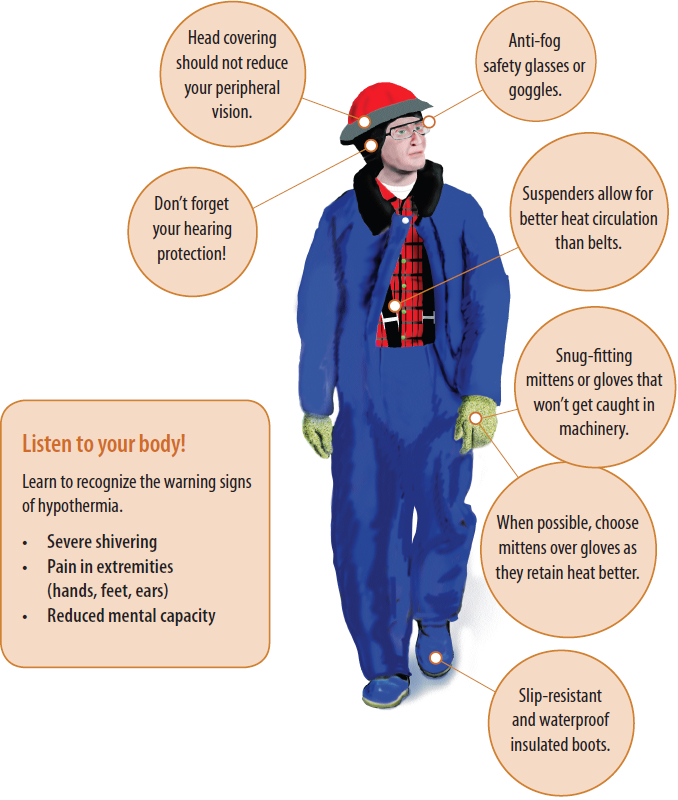

| Topic: Surviving the Cold | |
| Date Issued: February 9, 2011 | Date Revised: |
You are properly clothed for the outdoors if you can work comfortably.
Protecting yourself from the cold should not interfere with the use of your PPE.
Your work pace should not cause heavy sweating that will result in wet clothing. Layers of clothing should be removed or added in accordance with your body temperature.
A healthy worker who is properly protected and takes reasonable precautions can function efficiently and safely in cold environments.
It is the employer’s responsibility to ensure employees are properly attired and supervised when working under extreme cold conditions. Sections 22 and subsection 23(2) of General Regulation 91-191, under the Occupational Health and Safety Act, set out the requirements for cold stress:

1st layer – snug-fitting and allows sweat to escape
2nd layer – loose and warm
3rd layer – windproof and waterproof